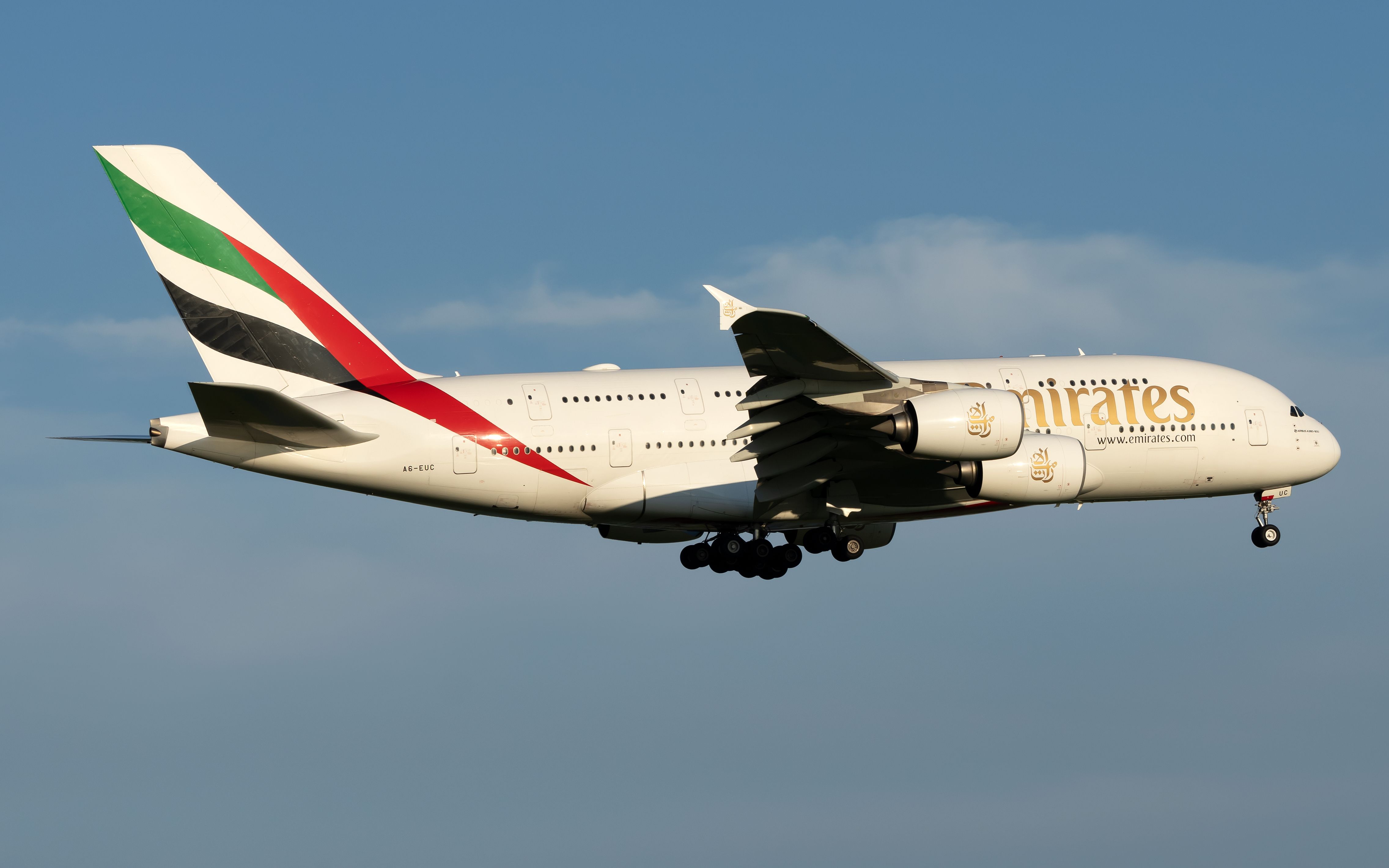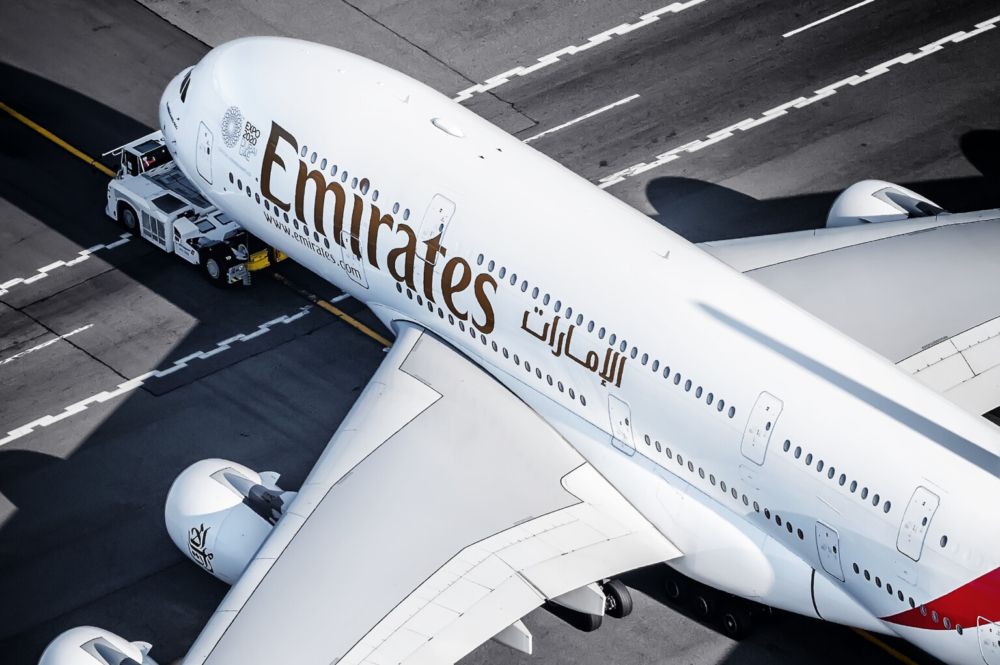Recently an Emirates Airbus A380 had an emergency slide open and inflate while the aircraft was parked at the gate. The incident occurred at Manchester Airport (MAN). The cause of the incident is unknown. From images captured within the terminal, it would appear that only one slide was deployed. The slide was attached to one of the exits connected to a jet bridge. It is unclear when the slide was deployed, whether it was before, after, or while the jet bridge was being attached.
Unnecessary deployment
The incident was likely accidental, as no issues were reported concerning the aircraft or the last flight.
Simple Flying reached out to Emirates for more details concerning the incident. The airline responded with the following:
"Emirates flight EK022 from Manchester to Dubai, scheduled to depart on 19 December at 08:50am (Manchester time), has been delayed due to a technical issue. Affected passengers are being provided with assistance, and will be re-accommodated on a replacement aircraft due to depart from Manchester on 20 December at 06:00am. Emirates apologises for the inconvenience caused. The safety of our passengers and crew is of the utmost importance."
Get the latest aviation news straight to your inbox: Sign up for our newsletters today.
Previous incident
In May 2020, a Nordwind Airlines Boeing 777 experienced a similar situation where one of the emergency slides deployed at an airport. The incident occurred at Lisbon, Portugal's Humberto Delgado Airport (LIS). The aircraft was parked at the gate when the slide inflated. The unanticipated deployment damaged one of the doors. Instead of fixing the issue, maintenance crews cleared the aircraft to fly.
It is not entirely clear whether any maintenance or flight crew members knew that the door had been damaged after the slide issue had been fixed. However, the problem became apparent shortly after the airplane took off, leaving LIS behind. While climbing to the assigned flight level, the pilots noticed that the cabin failed to pressurize. Instead of diverting, they chose to press on and fly at a lower altitude.
Flight number NWS9902, operated on a Boeing 777-200 registered VQ-BJA, was scheduled to fly between LIS and Moscow, Russia. The airplane traveled at 10,000 above sea level in cruise for the duration of the flight. Along the flight path, the pilots followed a fairly standard course to Moscow with a few alterations. These alterations were likely made to keep ample distance between the low-flying airliner and the ground. The flight landed in Moscow safely. No injuries were reported in association with this incident.
It is not clear what caused the incident or what dangers the slide deploying at the gate posed, but what is clear is that the subsequent damage posed a major risk to all those aboard the flight. Airliners use cabin pressurization systems to ensure the safety of passengers and crew aboard the aircraft.
The primary danger to safety while flying at high altitudes is Hypoxia. As an aircraft climbs to a higher altitude, the oxygen molecules in the air are further apart as the air is less dense, which means that every breath taken carries less oxygen to the brain. It is considered unsafe for an aircraft to fly above 14,000 feet without supplemental oxygen provided in pressurization systems. In this situation, the pilots chose to remain at 10,000 feet as that is the point at which they are assigned to fly if they lose cabin pressure.
The decision to continue the flight at a low altitude is curious, as most airlines would prefer their pilots to divert to a nearby airport upon discovering the problem. It is unclear if the Emirates A380 could have been damaged by the slide deployment similar to this 777.
What do you think of this incident? Let us know in the comment section.


